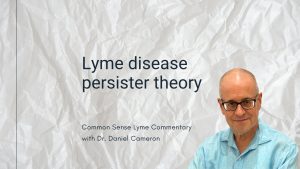Call for your appointment today 914-666-4665 | Mt. Kisco, New York

The series by Wormser and colleagues, published in the journal Diagnostic Microbiology and Infectious Disease examines the success of treatment after long-term follow-up with eleven patients. [1] All of the patients with LDFP received corticosteroids, in addition to antibiotics.
The authors found that 6 of the 11 patients (54.5%) suffered from facial nerve dysfunction an average of 13.1 months following the onset of treatment with corticosteroids. Dysfunction was defined as having residual facial muscle weakness, synkinesis, facial tightness and discomfort, facial muscle hypertonicity, restriction of facial movements, and gustatory epiphoria (Bogorad’s syndrome).
Synkinesia is a complication of facial paralysis. “Patients experience hypertonic contractures and synkinetic movements such as eye closure with volitional movement of the mouth or midfacial movement during volitional or reflexive eye closure,” Husseman explains in the journal Facial Plastic Surgery. [2] “Synkinesis can cause functional  limitation with activities such as eating, drinking, smiling, and may even lead to social isolation.”
limitation with activities such as eating, drinking, smiling, and may even lead to social isolation.”
Some patients with Bell’s palsy suffer from Bogorad’s syndrome, also known as Gusto-lacrimation, or “crocodile tear syndrome.” [3] Patients with this condition will have tearing of the eye while eating.
The 6 patients who continued to have facial nerve dysfunction included:
- 52-year-old man with “tearing of left eye when eating (Bogorad’s syndrome); mild residual weakness left side.”
- 51-year-old man with “mild residual left sided weakness; dryness left eye; after speaking a lot, left sided facial muscles feel abnormal.”
- 56-year-old man with “narrowed palpebral fissure right eye; dry mouth; sensation of muscles around right eye being squeezed; tearing of right eye; twitching of the area between the eyes on the forehead; new dimple right cheek; intermittent lisp.”
- 25-year-old man with “narrowed palpebral fissure left eye; reduced forehead movement; right sided jaw discomfort with eating; tearing of the left eye when eating (Bogorad’s syndrome).”
- 61-year-old man with “narrowed palpebral fissure right eye; difficulty whistling; right eye discharge at night.”
- 70-year-old woman who had “surgical facial nerve decompression nearly 3 months after onset of the LDFP.”
Children can also present with long-term complications from facial palsy caused by Lyme disease. On follow-up, one study found 4 out of 11 children (36.4%) with LDFP who had residual facial nerve dysfunction had synkinesis, explains Wormser.
[bctt tweet=”Study finds steroids harmful to patients with Bell’s palsy caused by Lyme disease.” username=”DrDanielCameron”]
The duration of antibiotic treatment was short. Patients were typically prescribed 14-28 days of doxycycline. Two children were treated with an oral beta-lactam antibiotic. The study was not designed to determine whether additional antibiotics would have been helpful.
The study raises concerns for those suffering from facial palsy triggered by Lyme disease who are treated with corticosteroids. “The principal finding in this study is that a high proportion of corticosteroid-treated patients suffered sequelae when evaluated at approximately 1 year of follow-up,” writes Wormser.
“Although corticosteroids are frequently prescribed for LDFP,” he writes, “the efficacy of this therapy has not been established.”
Related Articles:
Case Report: 46-year-old Canadian man with Bell’s palsy
Steroid use can lead to long-term treatment failure for Lyme disease patients
When Lyme disease mimics a heart attack
References:
- Wormser GP, McKenna D, Scavarda C, Karmen C. Outcome of facial palsy from Lyme disease in prospectively followed patients who had received corticosteroids. Diagn Microbiol Infect Dis. 2018.
- Husseman J, Mehta RP. Management of synkinesis. Facial Plast Surg. 2008;24(2):242-249.
- McCoy FJ, Goodman RC. The crocodile tear syndrome. Plast Reconstr Surg. 1979;63(1):58-62.




Does this also apply to other Lyme symptoms
Chronic complications of Lyme disease have been described after steroids.
Hello,
I am a medical student in england. I was in Facial paralysis 1 week ago. Boriella IgM +. I use doxycycline and streoid. What is your suggestion?
I am sorry to hear you are having problems finding the best answer. Doctors in the US tend to prescribe steroids in case the problem is due to a virus. The article I referred to in the Blog describes the consequences of that protocol. I treat my patients clinically. The Bell’s can last awhile. I treat longer if my patient is taking steroids and if there are other symptoms.
My 4 year old is being treated for Lyme and Bell’s Palsy with Doxycycline. Is that enough or should he also be on Prednisone? What else can I do to help the recovery from Bell’s?
Steroids have been helpful for Bell’s palsy due to a virus. It is not clear whether steroids are helpful if the cause Lyme disease. I have been reluctant to use steroids if Lyme disease is the cause.
My 6 year old son has a same kind of symptoms last 2 days, his left side eye since yesterday tearing,hard to close,it doesn’t blink, and his mouth crooked,he doesn’t have any kind of infection except this type of symptoms,I hope your going to make me happy give me right suggestions
That could be Bell’s palsy. You will need to have your son evaluated by a doctor or an ER.
Steroidal therapy can suppress patients’ immune systems, allowing the Borrelia and other co-infections to grow, rather than attacking the infections. You may ask why patients are given steroids like prednisone. The answer is because Lyme is often misdiagnosed as autoimmune diseases, such as fibromyalgia.
I took my daughter to the ER on Friday because she was experiencing facial paralysis (it was a slow progression and she was now on Day 5 of it). They put her on 20 ml of prednisone for 5 days; 15 ml of prednisone for 3 days; and then continuing to wean after that. Her blood work came in today, Monday, and she tested positive for Lymes. I gave her her dose of prednisone tonight but I am worried!! Should I have? She sees a DR tomorrow late afternoon to get on an antibiotic for the Lymes. Should I ask her to get off the prednisone? Can she get off it without being weaned since she is only on day 4 of it? Please advise. Thanks very much.
I have had patients who were started on Prednisone before being diagnosed with Lyme disease. I typically start on an antibiotic if Lyme disease is a consideration. I can’t comment on whether the steroid can be stopped. I am glad to hear your will see a doctor tomorrow.
I got Bell’s palsy about 2 yes ago but never went to the doctor but I still have some symptoms like eye waters when I eat and don’t have full sensitivity on left side of my face I’m wondering if taking ivermectin would help?
I have not seen any studies using ivermectin. You might find my blog helpful. https://danielcameronmd.com/bells-palsy-and-lyme-disease/ or work with neurology/EBT